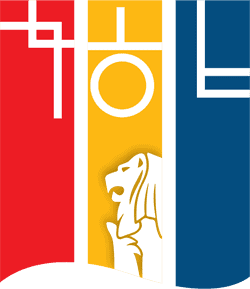
King Sejong created the Korean alphabet Hangul
Sejong has been known as the greatest king in the history of Korea and recognized for his achievements. King Sejong loved his people and made an effort to improve the status and conditions of his people. As a result of such efforts, Sejong made letters of the Korean language, the so-called Korean alphabet Hangul. You can see King Sejong’s Korean alphabet Hangul from our post and learn Korean from the online program of Seoul Korean Language School.
Table of Content
How was Hangul created?

1st form of the Korean alphabet Hangul Before the creation of Hangul, the elite borrowed Chinese characters as there was no written system in the Korean language. However, the common people had difficulty learning the Chinese characters and were often treated unfairly. Saddened by this, King Sejong felt compassion for his people and decided to create easy characters for anyone to learn. This initiated a cultural expansion for the nation as everyone could learn the unique writing system Hangul which was specially designed for the Korean language
What is the principle of Hangul?

In simple words, the principle of Hangul consists of hieroglyphic, stroke, and the initial-middle-final consonant. Consonants were devised from the shape of vocal organs, while vowels were made from the shape of the sky(•), land (ᅳ), and the human body(ᅵ). After creating the basic consonants and vowels, other letters were further developed by adding a stroke and forming the initial, middle, and final consonants into a letter.
Vowels
Hangul consists of vowels and consonants. Firstly, vowels resemble the shape of the sky(•), land (ᅳ), and the human body(ᅵ).
By forming the basic vowel shapes (•, ᅳ, l) with an additional point, we can create ‘ᅡ, ᅥ, ᅩ, ㅜ’. ‘ㅏ’ refers to the sun rising from the East Sea while ‘ᅥ’ refers to the sun going down to the West. Also, ‘ᅩ’ refers to the sun rising above the ground, and ‘ᅮ’ refers to the sun setting below the ground.

Consonants
Secondly, the consonants are based on the shape of the vocal organs. The throat, tongue, gums and teeth are referred to form the shape of consonants in order to help remember the pronunciation. The principles are based on the first five consonants (ᄀ, ᄂ, ᄆ, ᄉ, ᄋ). The first sound ‘ᄀ’ represents the shape of the root of the tongue blocking the throat. ‘ᄂ’ represents the tongue touching the upper gums. ‘ᄆ’ refers to the shape of the lips, and ‘ᄉ’ refers to the shape of a tooth. Finally, ‘ᄋ’ refers to the shape of the throat.

To sum up, if you want to learn more about the Korean alphabet Hangul, check this article Korean Alphabet Hangul.
In conclusion, Sejong created the Korean alphabet Hangul. His creation Hangul is the 1st step in learning the Korean language at SEOUL Korean language school Singapore.
Ultimately, if you want to learn some basic Korean letters, register for our trial lesson where you will learn 10 basic letters in 1 hour only.
Or you can use our online program Korean Alphabet Hangul online.
Read also
![]()
Check all Korean language courses of SEOUL Korean Language Centre.
Register for a trial lesson.
Try our free online Korean alphabet course.
If you are not a beginner, test your level with an online Korean placement test.
If you have any enquiries, contact Seoul Korean LC.
















0 responses on "King Sejong, Father of Korean Language"